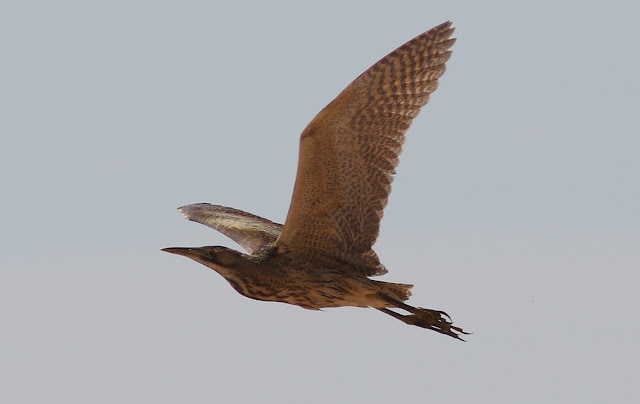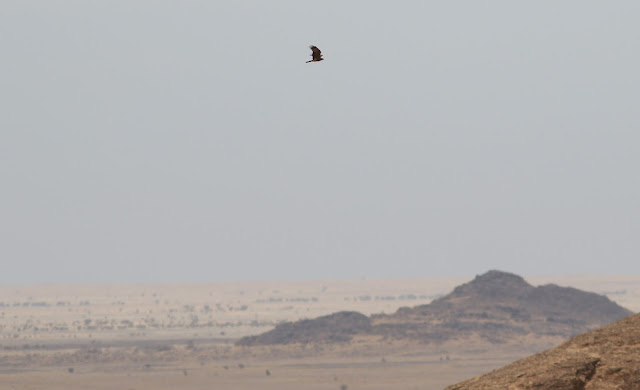Certainly one of the highlights of the trip- with suitable habitat confined to small areas, any small sheltered wadis with scrub or any wet areas were dripping with concentrated migrants while overhead raptors were moving, especially over the inselbergs which they were using to pick up thermals.
Great Bittern- the 2nd record for Western Sahara and the first actual sight record following a satellite tracked bird that flew from Europe and over Western Sahara to the Gambia. Clearly the cryptic plumage and pose did little to conceal its presence in the bleakness of the desert.
Wryneck- another cryptic plumaged bird failing well to conceal itself. This bird was in Dakhla city centre on the pavement.
This Spotted Crake didn't do too bad getting away from the camera
Male Woodchat Shrike
Blue-headed Wagtail- on it's way to western continental Europe
Spanish Wagtail on it's way to Iberia
and one of our Yellow Wagtails on it's way to Blighty
Male White-spotted Bluethroat - had at least 10 of these between a couple of sites
Female Bluethroat
Western Olivaceous Warbler (Isabelline Warbler). Eastern Olivaceous Warbler (Olivaceous Warbler) also occurs in Western North Africa of the form reiseri- can be told by having pale tips to bunched secondaries and a more contrasting secondary panel.
Western Orphean Warbler
Western Subalpine Warbler - Moltoni's Warbler and Eastern Subalpine Warbler also migrate through Western North Africa. Eastern Sub-A in adult male plumage has contrasting underparts with richly coloured throat and pale underparts. Moltoni's is pinkish on the underparts.
An Iberian Chiffchaff candidate- the contrasting white belly and bright lemon supercilium , throat and breast are indicative but unfortunately the bird was silent. Most of the migrants were conspicuously silent- most of the phylloscopus weren't even contact calling. The Common Redstarts were using their brief tick call, Nightingales could only muster up the croacking call and very short bursts. There was none of the sing as your moving north that goes on when the migrants reach e.g. UK.
Female Black-eared Wheatear
Western Bonelli's Warbler
Common Nightingale - another normally secretive bird behaving conspicuously in the desert
Melodious Warbler
Male Pied Flycatcher in the city park. In a tiny park square outside the hotel we had Pied Fly, Wryneck, 2 Tree Pipits, 3 Night Herons, Yellow Wagtail, Blackcap, Northern Wheatear and House Bunting with Little Swift overhead.
Tree Pipit
Male Montagu's Harrier- had three Montys moving north over the desert
Pale phase Booted Eagle
Black Kite- had up to 250+ in the air at once over Aousserd - presumably the inselbergs in this area act as a migration marker and an area of thermal generation. In the time we were at the coast we didn't have much raptor migration suggesting that most of the raptor migration was away from the windy coast and further inland.
Black Kite over the desert
Marsh Harrier moving north- it was mainly Black Kites and Marsh Harriers moving during our visit
and meanwhile out in Dakhla Bay- thousands of waders at the Ramsar site. A mix of mainly Barwits, Whimbrels, schinzii Dunlin and Sanderling. Won't be long before this lot are flying past South Coast watch points and if we get lucky at Beddington- might get one or two of these popping in.




























2 comments:
Bloody hell
Indeed!
Post a Comment